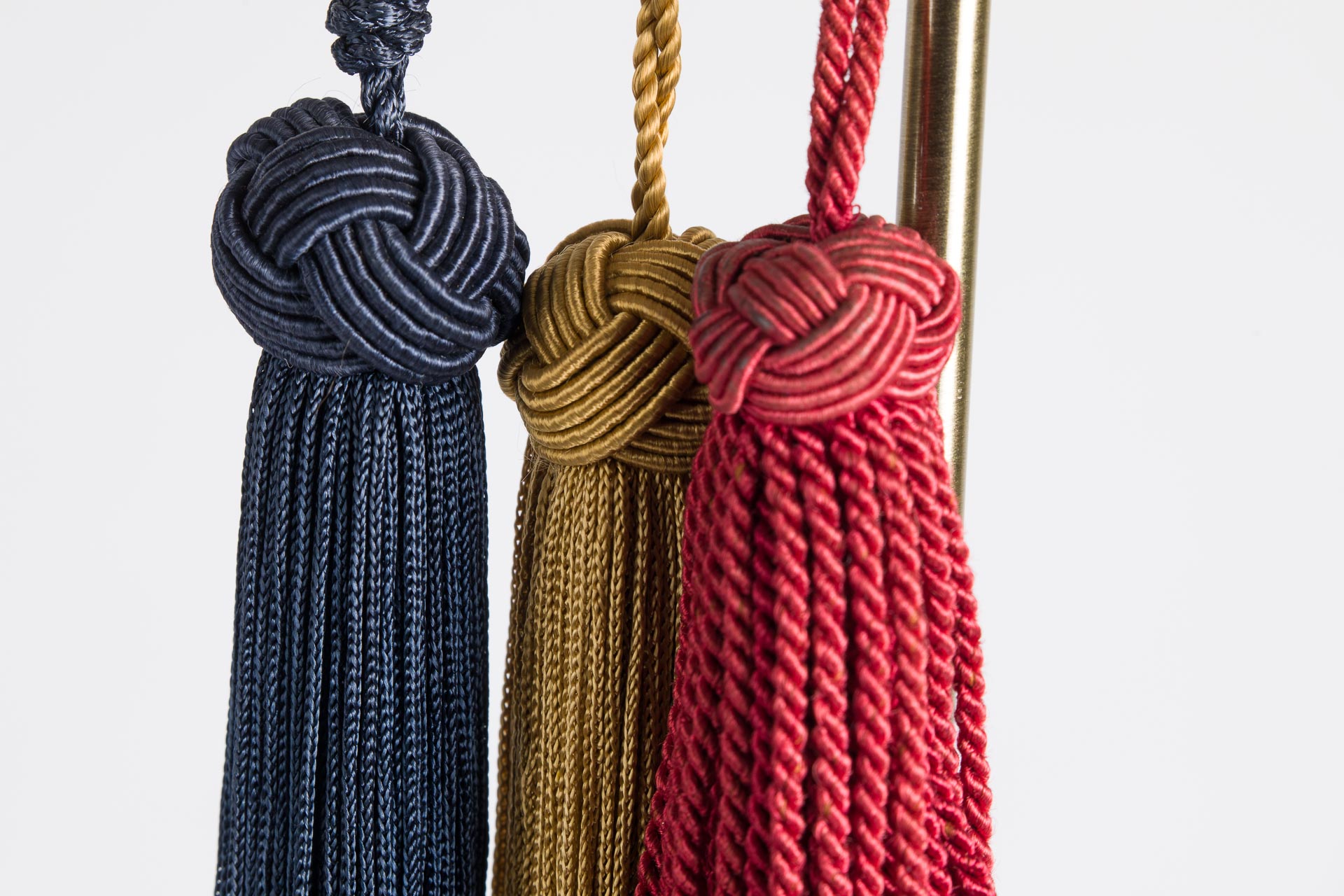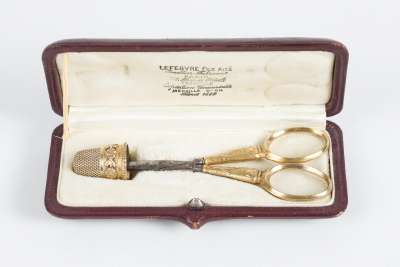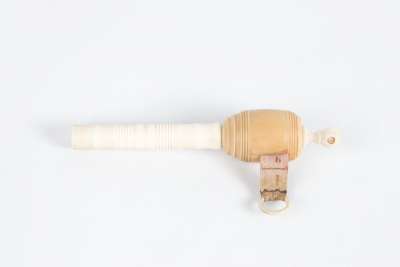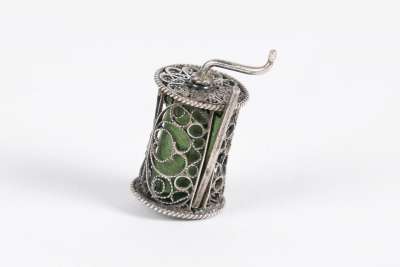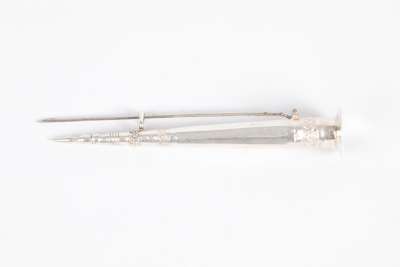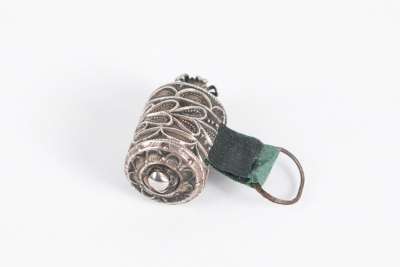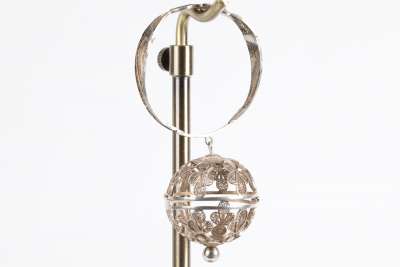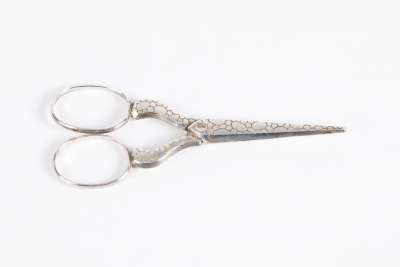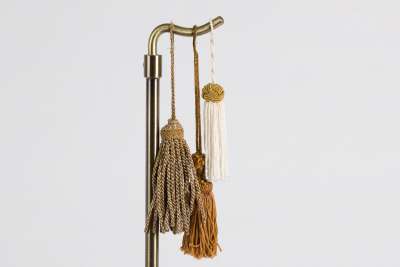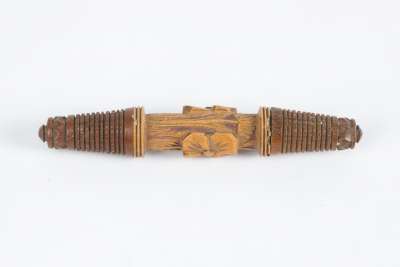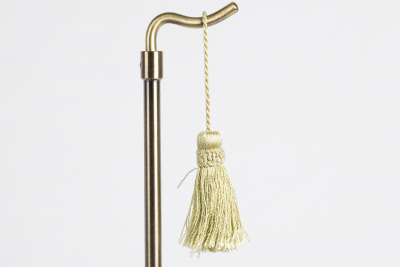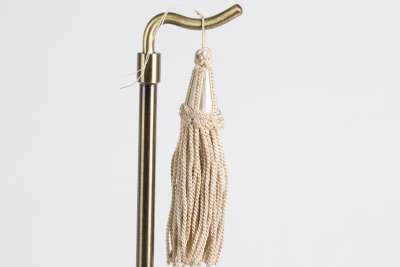This collection comprises three vintage tassels, each with intricately knotted tops. The craftsmanship suggests they may date back to the early 20th century. Though the exact maker is unknown, these tassels likely originate from Europe, where such decorative elements were often used in interior design and fashion. The tassels are visually striking, featuring a blend of traditional design elements that highlight their historical provenance.
Condition Report
The vintage tassels are in a condition that reflects their age and historical use. There are signs of wear typical of items of this vintage, including slight fraying of the threads and some discolouration, which adds to their authentic charm. Despite these age-related characteristics, the tassels remain structurally sound, with the knotted tops still retaining their intricate design. The tassels have been carefully preserved to maintain their historical integrity, making them suitable for display or collection.
Dimensions
Weight: 52gm, Length: 19cm x 2 17cm x 1, Width: 3cm.
A Decorative Accent for Home Interiors
Originally, tassels like these were used as decorative accents in various settings. They adorned curtains, furniture, and even garments, serving as both functional and ornamental elements. The tassels would have added a touch of elegance and a sense of completeness to any ensemble, whether in a domestic or fashion context. Their versatility made them a popular choice for designers looking to enhance visual appeal with subtle detailing.
Traditional European Design
The style of these tassels is emblematic of traditional European design, which often emphasised intricate detailing and craftsmanship. The knotted tops are a testament to the skill involved in creating such pieces, where every knot and strand was meticulously crafted. This style was prevalent in European interiors, reflecting a time when attention to detail was paramount in both decorative and functional objects. The tassels exhibit a timeless quality, making them appealing to collectors interested in historical design.
Handcrafted Textile Artistry
The creation of these tassels involved skilled textile artistry, with each knot carefully tied by hand. This method of construction ensures durability while showcasing the artisan's dedication to their craft. The materials used, likely natural fibres, would have been selected for their strength and aesthetic qualities. The intricate pattern of the knotted tops demonstrates the artisan's expertise and the high level of craftsmanship that was typical of the period.
Unattributed European Craftsmanship
While the exact maker of these tassels is not identified, they reflect the quality and style typical of European craftsmanship in the early 20th century. During this period, many artisans specialised in creating decorative accessories, contributing to the rich tradition of European textile arts. These tassels are representative of the anonymous yet skilled artisans who crafted beautiful and functional items, leaving a legacy of high-quality work that continues to be appreciated today.
Collected for Their Historical Charm
Collectors of antique textiles often seek items like these tassels for their historical significance and aesthetic appeal. Such pieces offer a glimpse into the past, revealing the design trends and craftsmanship techniques of their time. These tassels are particularly attractive to collectors interested in textile arts and historical interior design. Their condition and style make them desirable for those who appreciate the artistry and history inherent in vintage decorative items.

